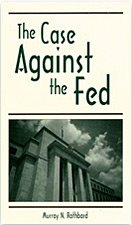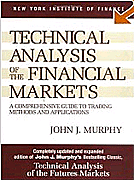James Turk: There goes the Financial Times again
September 18, 2009 - Certain segments of the media rarely give gold a fair shake, particularly when it approaches important price levels. These publications time and again take bald pokes at gold. So when I see articles doing that, I like to poke fun at the article, but more importantly, set straight its misrepresentations and errors about gold.
One publication that is consistently on the wrong side of the gold market is The Economist. Using its pathetic record of anti-gold articles, I have already documented its curiously timed invectives with what I call "Gold’s Infallible Indicator". See also "Gold’s Infallible Indicator - Six Months Later".
The Lex column from the September 9th Financial Times is another case in point. This disparaging - and highly misleading - account of gold can have no other purpose but to keep people from buying gold. It does not offer analysis, but propaganda, which is not surprising given the FT’s longstanding role as an apologist of central banking and fiat currencies.
Had Lex offered an unbiased analysis, it would have mentioned gold’s attributes, including the fact that it has appreciated at doubt-digit rates for nine years in-a-row on average against all of the world’s major currencies, making it one of the best performing asset classes this decade. And gold has done this without any counterparty risk, which is perhaps its greatest attribute and is not even mentioned by Lex.
Given my penchant for dissecting anti-gold propaganda pieces, this Lex column needs to be skewered. So here is my analysis of it, to help people read between the lines and put its propagandistic anti-gold fervor into a proper perspective. What follows is the Lex column in italics, with my comments inserted in the text.
Like a cure-all tonic prescribed by a travelling rural huckster, gold [My goodness, Lex not being one to waste words, sets the disparaging tone of this article right from the start by comparing gold to a "huckster".] somehow seems to be good for nearly everything that ails us. [Is it that gold just "seems" to be good, or could it be that gold really is that good?] Just consider the diverse economic backdrops that have caused its price to spike over the years: stagflation, financial panic, speculative mania and currency debasement. [Yes, and left unmentioned is the common denominator of all these problems, which is the mismanagement of national currencies by governments and central banks.]
Back in 1980, when the yellow metal hit $850 an ounce - still the record in real terms [Adjusting for inflation, it takes more than $2,300 to purchase today what $850 purchased in January 1980, using the US government’s current CPI calculator. However, the US government has since amended its CPI calculator numerous times. Fortunately, www.shadowstats.com makes available the same CPI calculator used when the Carter administration haplessly watched the gold price soar nearly three decades ago. Using this Carter-era calculator, it takes over $6,300 today to match $850 of January 1980 purchasing power.] - western economies were being squeezed simultaneously by the second oil crisis and record post-war inflation.
Fast-forward to March 2008, when it broke through $1,000 for the first time on safe-haven buying [Yes, gold is a safe haven, and people buy it because it does not have counterparty risk, among other reasons.] as Bear Stearns teetered. It approached the same level a few months later when bank worries had eased temporarily but commodity-fever was peaking, and again in mid-September when Lehman’s collapse created so much demand that smelters worked overtime to churn out bullion. [Yes, but not as fast as central banks were working overtime to print currency to bailout the banks and other failed institutions that had political clout.]
The thread connecting these episodes was fear. [Fear was the result, not the cause. The cause was the failure of bank regulation by central banks as well as their gross mismanagement that allowed the credit bubble to appear in the first place.] But for those who rushed to buy near the top, peace of mind was costly. [It has only been costly if you held stocks. Gold is above $1000, but the Dow Jones Industrial Average, for example, is still -15.7% below its level the day before Lehman collapsed and -47.5% below its all-time high.]
It would be tempting to dismiss the latest surge above $1,000 an ounce as more of the same were it not for concerns about the currency in which its price is denominated. [Here is a palpable attempt to marginalize gold, saying that it is solely US dollar denominated and that it is rising only because of problems with the US dollar, which of course is completely wrongheaded. Gold’s price, or more accurately because it is money, gold’s rate of exchange, can be measured against any currency. Importantly, because gold is rising against all of the world’s currencies, it is obviously not just the US dollar that has people worried.]The trade-weighted average of the US dollar against six world currencies has neared a multi-year low of about 77, down from 121 eight years ago, as foreign creditors fear an endless stream of red ink from Washington. [At last, some meaningful and useful analysis. But again, this tidbit disinforms as much as it provides useful information because it focuses only on the dollar. It thereby diverts attention away from other currencies, all of which are being mismanaged by central banks to some degree as evidenced by gold’s ongoing appreciation in those currencies.]
Stories of those who preserved their wealth or escaped hunger in decades past by hoarding precious metals when their governments set the printing-presses loose provide gold bugs with a compelling historical narrative. [Yes, and one that is very relevant today given what governments and central banks around the world are doing to national currencies by again setting the printing presses loose. But the US is not Weimar Germany [Not yet, but wait a few months.] and, in spite of interest rates that make gold ownership cheap, [Which is only one of gold’s many advantages at the moment] the opportunity cost of owning it is still unattractive in the long-run. [Complete rubbish. Gold has appreciated at double-digit rates on average this decade against all of the world’s currencies, and achieved that without counterparty risk. Gold is doing what money is supposed to do - preserve purchasing power.] Smarter ways to anticipate inflation include bricks and mortar, [The FT is obviously grasping for straws. Think about it. It is bricks and mortar - not gold - that have the burdensome carrying costs with maintenance, various property related taxes, etc., not to even mention that real estate prices have been falling] mineral rights [Owning gold has completely different risk/return criteria than owning any right to mine it.] or even equities, [Only if you choose the right ones, and this decade at least, it would have been very difficult to choose equities that have appreciated at rates better than gold.] all with vastly superior historical returns. [Stocks are investments, and gold is money. They are different things, with different uses, so they cannot logically be compared. Stocks do generate returns over time, whereas sound money does not. Gold’s appreciation during periods of monetary turmoil, like the present one, is simply the loss of purchasing power of the national currency in which gold’s price is measured.] Financial panaceas, such as medical ones, should always come with a health warning [And so should articles about gold in the FT].
Labels: financial crisis, James Turk, market manipulation















![[Most Recent Quotes from www.kitco.com] [Most Recent Quotes from www.kitco.com]](http://www.kitco.com/images/live/t24_au_en_usoz_6.gif)
![[Most Recent Quotes from www.kitco.com] [Most Recent Quotes from www.kitco.com]](http://www.kitco.com/images/live/au_go_0030_ny.gif)
![[Most Recent Quotes from www.kitco.com] [Most Recent Quotes from www.kitco.com]](http://www.kitco.com/images/live/au_go_0365_ny.gif)
![[Most Recent Quotes from www.kitco.com] [Most Recent Quotes from www.kitco.com]](http://kitconet.com/charts/metals/silver/t24_ag_en_usoz_4.gif)

















0 ΣΧΟΛΙΑ (COMMENTS):
Post a Comment
<< Home